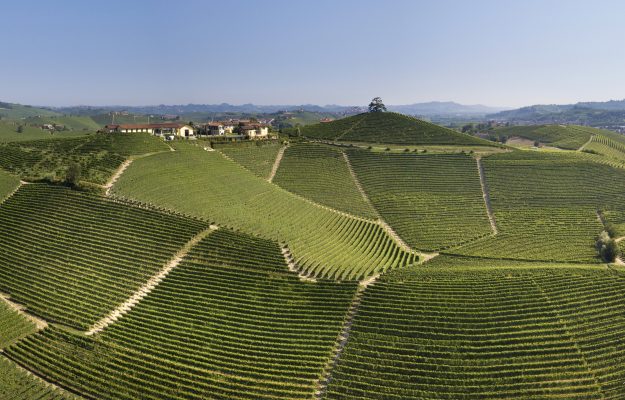Vintages are an essential value for great wines. It is definitely the case for Barolo, which in 2022 will be putting the 2018 harvest out on the market. The first tastings of the vintage seem to have revealed a classic and elegant wine that is stylistically reminiscent of Burgundy. The first impressions of Barolo 2018 (which will be the star player of the monthly tasting newsletter, “I Quaderni di WineNews”, in March 2022), come from the DEDITUS producers in Langhe, the Association led by Gianni Gagliardo, which brings together nine prestigious families at the helm of prominent Barolo wineries, such as Azelia, Cordero di Montezemolo, Luciano Sandrone, Michele Chiarlo, Pio Cesare, Poderi Gianni Gagliardo, Poderi Luigi Einaudi, Prunotto and Vietti.
The Barolo 2018 vintage, therefore, has produced extraordinary wines, distinguishable from the first tastings for their elegance and olfactory expressiveness. They are “important, and well-balanced wines that promise a high capacity for prolonged aging”, the producer, Luca Sandrone of the Sandrone Luciano winery commented regarding his wines. After the year 2017, which was characterized by high temperatures and low rainfall, the 2018 vintage opened to a quite rainy winter, which “restored the reserves consumed because of the dryness in 2017”, Gianni Gagliardo, of Poderi Gianni Gagliardo explained. “The 2018 vintage opened to a long winter with abundant rainfall that restored the water supply to the soil”, Gianluca Torrengo, oenologist at the Prunotto winery commented. “The winter season lasted until the beginning of March, yielding temperatures below the past few years’ average, thereby causing slow and uneven vegetative recovery of the vine, amplified by the exposure of the different vineyards. Then, in the spring and the first part of summer low temperatures and frequent rainfall continued”. During the summer, however, the climate went back to its normal temperatures, allowing the grapes to fully ripen, “then, from the second half of July, isolated, but regular storms ensured good water supply, allowing the plants to follow a constant vegetative cycle”, Federica Boffa Pio from Pio Cesare confirmed. “The months of August-September-October were dry and hot. There were sunny days and lower night temperatures, which allowed Nebbiolo to complete the ripening process in a totally regular way; i.e., no peaks, to arrive at harvest time in perfect quality conditions”. “We had experienced opposing sensations in the space of just a few months. In June, it was the fear of a harvest compromised by too much water and peronosporic attacks, while in September we were amazed by a reborn balance, thanks to a perfect summer and a lot of finishing work in the vineyards”, Alberto Cordero of the Cordero di Montezemolo winery, added.
Further, according to Matteo Sardagna Einaudi of Poderi Luigi Einaudi, “the grapes were in excellent health in the vineyard, thanks to the stable and sunny months of September and October. The wait was rewarding”. This allowed us to wait tranquilly for the harvest, which “at Pio Cesare began on October 7th in the Barbaresco area, in Treiso, and then moved quickly to the Barolo area, starting from Serralunga, then Monforte, continuing to Grinzane and La Morra, ending on October 15th in Novello”. The Prunotto winery harvest also “ended on October 16th with the last Barolos from Bussia”, while it ended at Poderi Luigi Einaudi, “between the second and third week in October”.
Yields were lower than average, but guaranteed “an excellent structure, and a high concentration of fruit thanks to the summer temperatures and water availability”, Cesare Benvenuto Pio (Pio Cesare), continued.
The result is “wines of wonderful balance and freshness, traditional, gifted with an extremely attractive fruit purity”, Luigi Scavino (Azelia), commented. “These wines have beautiful texture, and they are compact, expressive, full-flavored. Structurally, they are “middleweights”, and are very attractive”, Stefano Gagliardo of Poderi Gianni Gagliardo, confirmed. Therefore, an expressive and immediate Barolo wine that “will bring instant gratification”, Lorenzo Scavino (Azelia), confirmed.
Luciano Sandrone expressed similar comments for the Barolos, “a classic vintage, a very bright color, and a good fresh nose, but it is in the mouth that you perceive the combination of an important structure supported by the fairly ripe tannins that make the wine soft and elegant”.
Elegance, ready to drink combined with a potential for longevity, therefore, are the watchwords. “It is a year of great elegance”, Michele Chiarlo, owner of the Chiarlo winery, reiterated, “which combined with the freshness and harmony of silky tannins give Barolo a unique appeal”. Elena and Luca Currado Vietti of the Vietti winery concluded, “those who love classic Barolo, elegant and great olfactory complexity, will be delighted. There has probably never been a vintage where Barolo was so ideally close to Burgundy in terms of style, complexity and interpretative precision of the terroir”.
Copyright © 2000/2025
Contatti: info@winenews.it
Seguici anche su Twitter: @WineNewsIt
Seguici anche su Facebook: @winenewsit
Questo articolo è tratto dall'archivio di WineNews - Tutti i diritti riservati - Copyright © 2000/2025








































































































































































































